Technical Indicators
A Technical Indicator is a crucial tool used to identify market trends. But what is a Technical Indicator? The article below will provide answers.
For those of you studying technical analysis, you've probably come across Indicators - technical indicators. These are tools that greatly assist us in identifying trends and finding suitable entry points. So, what is a technical indicator? Stay tuned for the upcoming article!
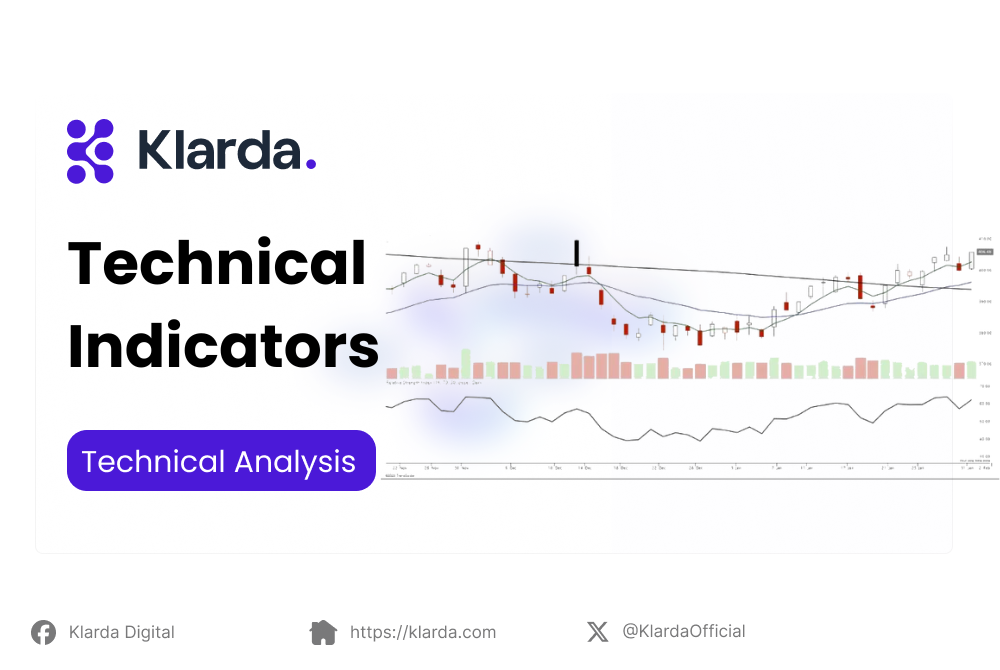
KEY TAKEAWAYS
- Technical Indicator is one of technical analysis of the financial markets. It is used to identify market trends, significant support and resistance zones, and the strength or weakness of trends.
- Indicators in technical analysis evaluate investments by studying statistical trends in trading, such as price and volume.
- Three of the best technical indicators for day trading include Moving Average Convergence Divergence (MACD),
- Relative Strength Index (RSI), and Stochastic Oscillator.
- For swing trading, three best technical indicators are Moving Averages, Volume, and Support & Resistance.
WHAT IS TECHNICAL INDICATOR?
Technical Indicator in the technical analysis of financial markets is used to identify market trends, significant support and resistance zones, and the strength or weakness of trends. It provides us with reasonable entry points and profit-taking points as well as stop-loss points to optimize profits.
This type of indicator in technical analysis may include components like straight lines, a curve following prices, or various other elements. Indicators are formed based on past data, with their values derived from different calculations using historical volume or price data of financial assets.
HOW TECHNICAL INDICATORS WORK?
In technical analysis, indicators assess investments by analyzing statistical trends in trading, including price and volume. Unlike fundamental analysis, which evaluates intrinsic value through financial data, technical analysts concentrate on patterns, signals, and charting tools to measure the strength or weakness of a security.
Technical analysis trading can be applied to various securities with historical trading data, including stocks, futures, commodities, fixed-income, currencies, and more. While the examples in this tutorial often center on stocks, these concepts are adaptable to any type of security. It's worth noting that technical analysis is widely employed in commodities and forex markets, where traders focus on short-term price movements.
TYPES OF TECHNICAL INDICATOR
There are two main types of technical indicators:
- Overlays: These indicators, like moving averages and Bollinger Bands, share the same scale as stock prices and are plotted directly on the price chart.
- Oscillators: These indicators, including the stochastic oscillator, MACD, and RSI, fluctuate above or below a price chart between a local minimum and maximum.
Traders often use a variety of these indicators, selecting those that suit their preferences. They may also combine technical indicators with subjective analysis, like chart patterns, for trade ideas. Additionally, due to their quantitative nature, technical indicators can be integrated into automated trading systems.
WHAT ARE THE BEST TECHNICAL INDICATORS FOR DAY TRADING?
Currently, there are hundreds of different indicators. The reason for such abundance is that coding a technical indicator today is quite simple. You only need to use the Pine Script tool on Tradingview and modify or add a few lines of code to create a new indicator.
And here are three of the best technical indicator for day trading:
Moving Average Convergence Divergence (MACD)
This is the first technical analysis tools. The Moving Average Convergence Divergence (MACD) assists in identifying trend direction and momentum. A value above zero suggests an upward phase, while below zero indicates a bearish period.
Composed of the MACD line and a slower-moving signal line, a crossover where MACD crosses below the signal line signals a price decline, and vice versa for a rising price.
Monitoring the position relative to zero guides trade decisions—above zero may signal a buy when MACD crosses above the signal line, while below zero, a potential short trade when MACD crosses below the signal line.

The Moving Average Convergence Divergence helps identify trend direction and momentum.
Relative Strength Index (RSI)
The next technical analysis tool is RSI. The Relative Strength Index (RSI) serves three main purposes. Ranging between zero and 100, it assesses momentum and trend strength by comparing recent price gains to losses.
Firstly, RSI is employed as an overbought/oversold indicator—above 70 signals overbought conditions, potential for decline, while below 30 signals oversold conditions, potential for a rally. Traders may wait for RSI to cross above 70 and then drop below before selling, or drop below 30 and then rise back above before buying.
Secondly, divergence in RSI compared to price movement indicates a weakening current trend and a potential reversal.
Lastly, RSI aids in identifying support and resistance levels. In uptrends, a stock often stays above 30 and frequently reaches 70 or above, while in downtrends, RSI typically stays below 70 and often drops to 30 or below.
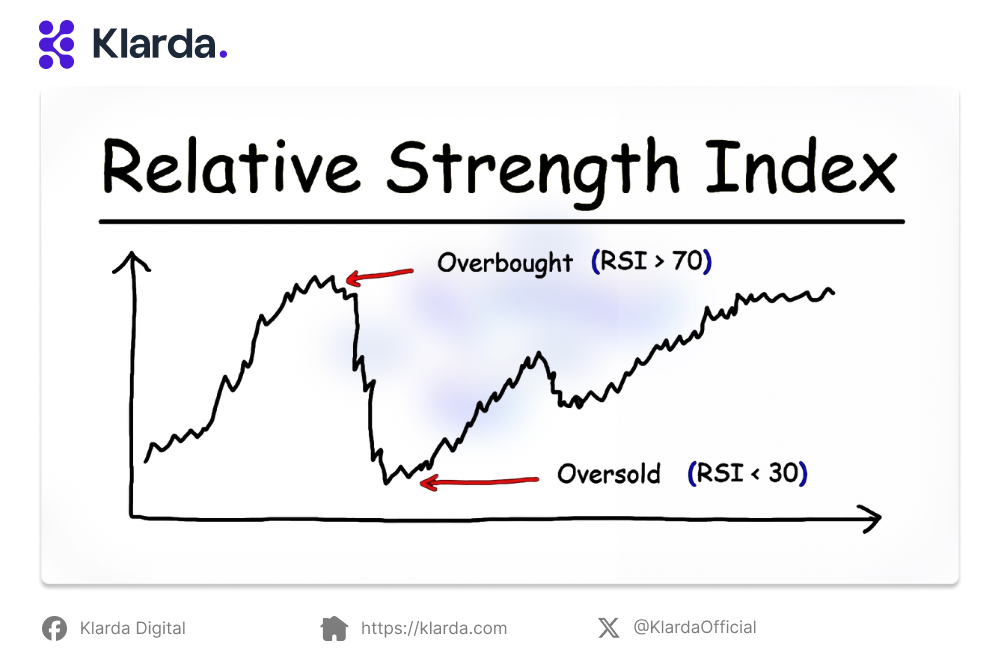
The RSI (Relative Strength Index) serves three main purposes.
Stochastic Oscillator
The final tool in technical analysis is the Stochastic Oscillator. This technical analysis explained the current price relative to the price range over a set number of periods, with values plotted between zero and 100. It reflects whether the price is making new highs in an uptrend or new lows in a downtrend.
Operating quickly, it serves as an overbought/oversold indicator, with values above 80 signaling overbought conditions and below 20 indicating oversold conditions. Considering the overall price trend, during an uptrend, a drop below 20 followed by a rise above may be a buy signal.
However, rallies above 80 are less significant in an uptrend. In a downtrend, watch for the indicator to move above 80 and then drop back below, signaling a possible short trade, while the 20 level is less impactful.
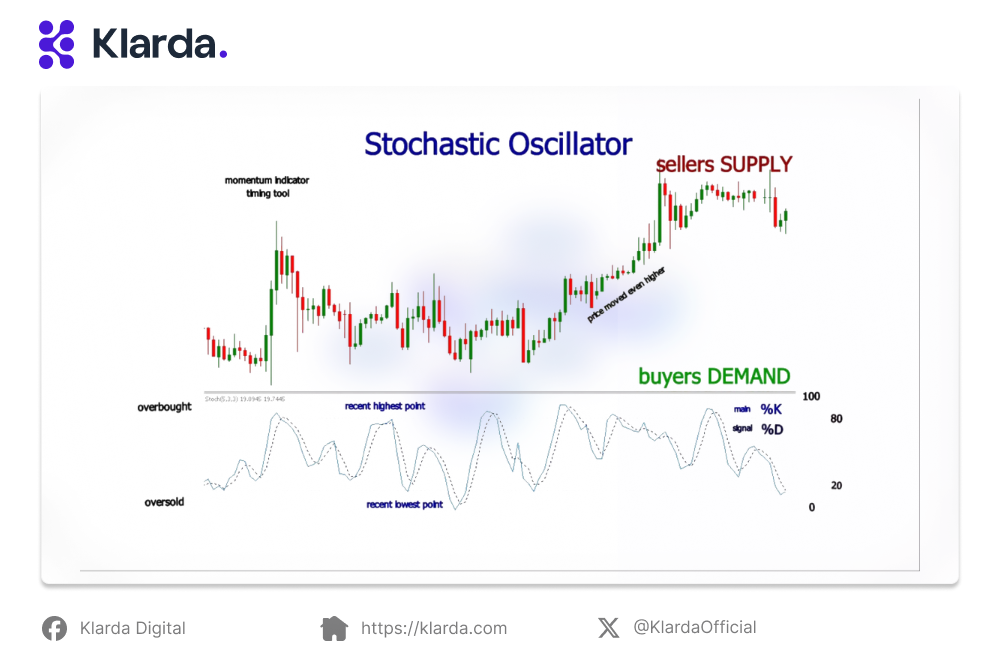
The stochastic oscillator explains the current price relative to the price range over a set number of periods, with values plotted between zero and 100.
WHICH TECHNICAL INDICATOR IS THE MOST ACCURATE FOR SWING TRADING?
And below are three best technical indicator for swing trading:
Moving Averages
Moving averages stand out as some of the most straightforward yet effective indicators for swing trading, serving the purpose of elucidating a security's trend by smoothing out price fluctuations.
There exist two primary types of moving averages:
- Simple Moving Averages (SMA)
- Exponential Moving Averages (EMA)
SMA computes the average closing prices in a set timeframe with equal weighting, though it's considered lagging. In contrast, Exponential Moving Averages (EMAs) aim to reduce lag by assigning greater weight to recent closing prices.
Individually, moving averages confirm trends rather than predict them. Yet, their potency is revealed through moving average crossovers, offering precise entry and exit cues. A bullish crossover, where a shorter-term moving average exceeds the longer-term one, signals an opportune entry.
Conversely, a bearish signal emerges as the shorter-term average descends below the longer-term counterpart, often indicating a prudent time to close a position. The simplicity and efficacy of moving averages equip swing traders with valuable tools, enhancing their ability to navigate the market with clarity on trends and strategic entry or exit points.
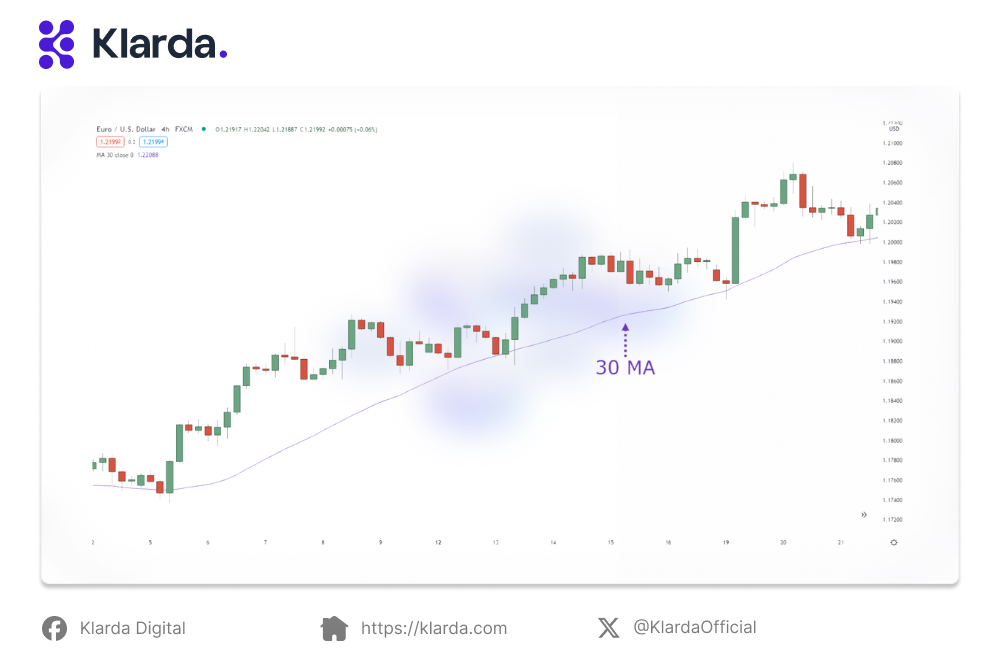
Moving averages are simple yet effective swing trading indicators.
Volume
Volume, a key measure of liquidity, quantifies the number of shares or units traded within a specified timeframe.
Widely regarded as one of the best stock indicators, strong trading volume facilitates easy asset liquidation and exit from positions. It's prudent to avoid trading assets with insufficient volume.
An effective way to utilize volume is by correlating it with price movements, resulting in four possible scenarios:
- A powerful bullish signal occurs with upward price movement and high volume.
- Upward price movement, low volume: Suggests a waning upward trend, possibly indicating a reversal
- High-volume downward price movement signals a strong bearish trend.
- Downward price movement, low volume: Indicates weakening bearish sentiment, opening the possibility of a reversal into an uptrend.
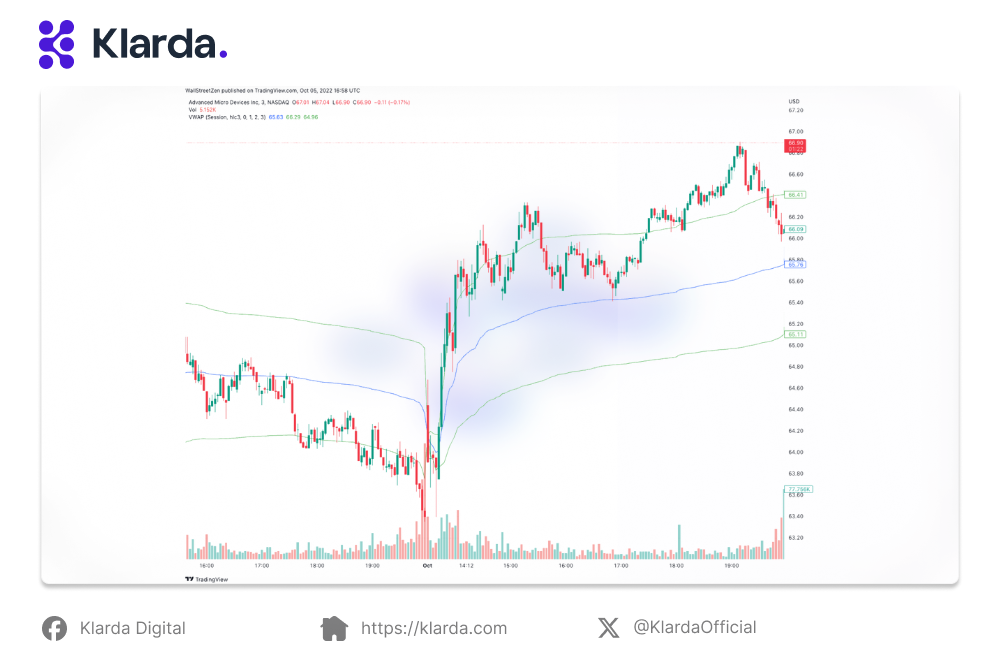
Volume is a crucial measure of liquidity, indicating the number of shares or units traded in a given timeframe.
Support & Resistance
Support and resistance, fundamental to technical analysis, offer concise representations of supply and demand dynamics. This uncomplicated technical indicator comprises two lines:
- Support Line: Represents the price level below which a security is unlikely to decline significantly.
- Resistance Line: Represents the price level above which a security encounters difficulty rising.
Price action can break through support or resistance, indicating the potential emergence of a new trend. Following such a breach, prices often retract within the boundary of the two lines. However, sustained price action, accompanied by robust volume, suggests the initiation of a new trend.
Post-breakout, the former resistance line may transform into the new support line and vice versa, a phenomenon referred to as role reversal.
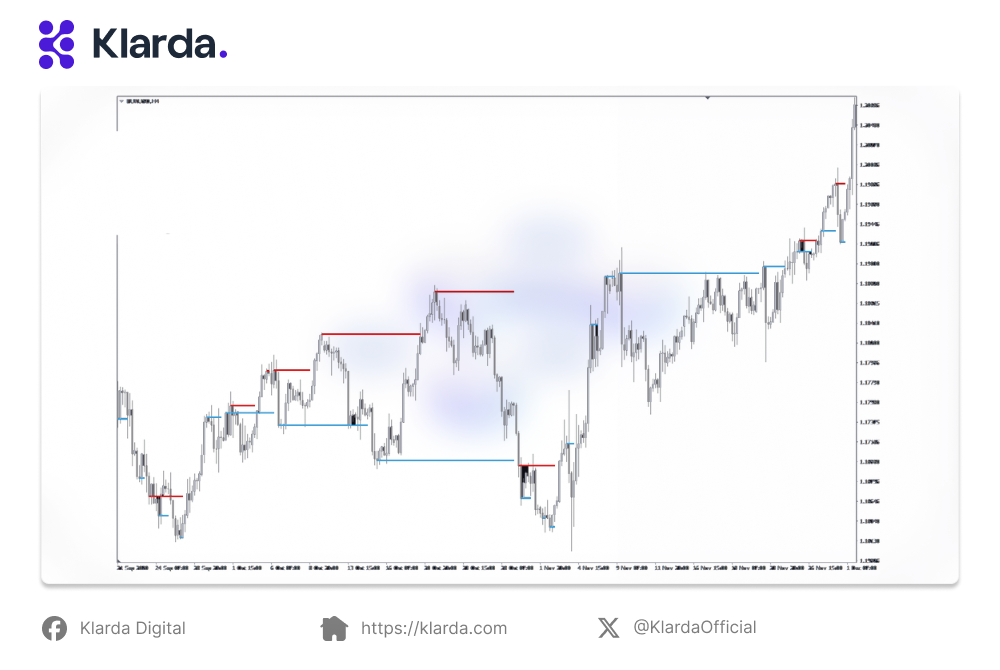
Support and resistance are fundamental elements in technical analysis, providing concise insights into supply and demand dynamics.
However, relying solely on technical indicators might not be sufficient; you still need to stay updated with comprehensive information to make informed investment decisions. In such cases, you might find Klarda appealing.
Klarda is a non-custodial financial platform focusing on providing accurate, real-time, and transparent information for individuals holding cryptocurrency assets on EVM networks.
With Klarda's outstanding features, you won't need to conduct fundamental and technical analysis yourself. Klarda delivers calculated trading signals based on leading technical indicators, ensuring high-precision predictive results.
That concludes our gathered information on technical indicator. We hope this proves useful to you, providing a foundation for in-depth understanding and accurate decision-making. However, it's crucial to emphasize that the information shared here is for informational purposes only, and we do not take responsibility for any investment decisions.
Updated 8 months ago